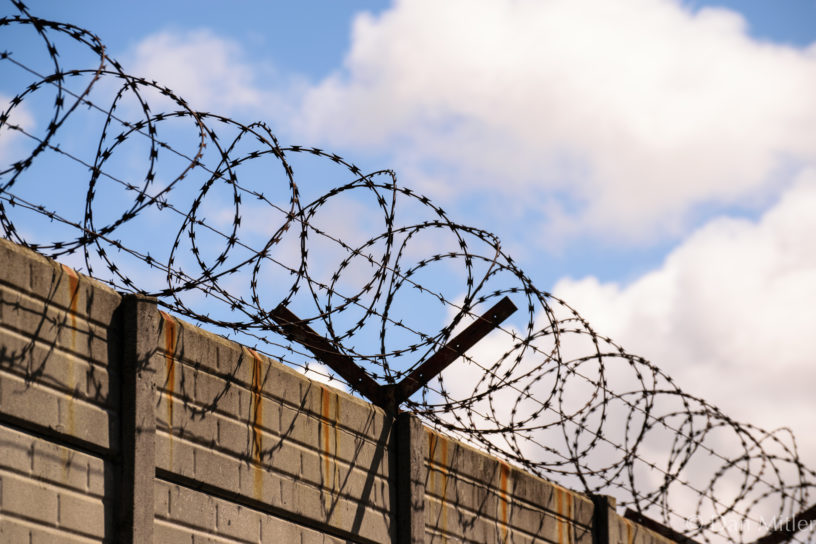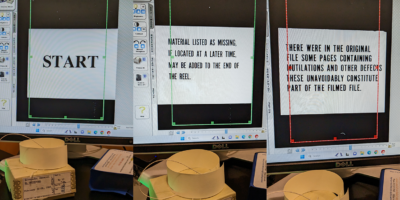By Sarah Hildebrand
Otisville Correctional Facility is deceptively beautiful. A medium-security men’s prison in upstate New York, it’s tucked away at the top of a forested hill where Corrections Officers ride around on horseback. From a distance, its sprawling campus looks nothing like the claustrophobic buildings of many New York City jails; it bears a shocking resemblance to a college campus. Even my classroom at the facility is enviable compared to some at CUNY institutions. What it lacks in technology it makes up for with an entire row of windows and enough space to rearrange desks. Its floors shine.
Yet, a prison is more than its environs. Otisville is part of all the systemic injustices of mass incarceration. The students in my college Composition course recount stints in solitary confinement and bemoan endless lists of rules, citing all the ways their bodies are policed. Their accounts are reminders that, regardless of location, any prison is a site of trauma.
And because settings of incarceration are necessarily traumatic, that trauma seeps into the prison classroom and the work we do together. This means that, before jumping into lesson plans, educators must work to create an environment in which teaching and learning can happen. While trauma is particularly pervasive in prison settings, educators should also be aware of its presence even in more traditional educational spaces.
One way to begin attending to the trauma in our classrooms is through student-centered learning activities. Part of the trauma of incarceration stems from the lack of agency experienced by incarcerated individuals. The rules, bureaucracy, and top-down model of power institutionalized in prison settings may make students hesitant to participate in class for fear of retribution. Student-centered pedagogy can help restore agency by empowering students to take ownership over their learning process.
These activities can begin on day one. On the first day of our class, my students and I collaboratively designed the course syllabus. After I provided a basic model and described overall course goals, my students were given the opportunity to break up into small groups to discuss aspects of the syllabus they liked, disliked, or wanted to change. Each group compiled a list of possible revisions, which were written on the board, discussed, and voted on. The syllabus was then amended to incorporate their feedback.
This activity helped students begin thinking about the ways they learn best and to see their own contributions as valuable. It also shifted the way they viewed me. One student approached me afterwards to say he had come to the class ready to keep his head down and do whatever I told him because that’s generally what’s expected of him in prison. However, the syllabus activity taught him I’d be willing to listen to his perspectives and that he wouldn’t be punished for them, even if we disagreed.
One aspect of the course that students were particularly concerned with during our discussion was how they would receive feedback—whether it would be written or verbal—and whether or not they’d have the opportunity to revise assignments. In addition to the many traumas of incarceration and worries around the availability of “second chances,” students had also experienced past educational trauma. They felt they were “bad” students and feared there was little hope for improvement despite their willingness to put in the work.
One of my biggest concerns while teaching in the program was that I would say or do something that would discourage my students from continuing their education. While in some classes on the outside students might barely read written feedback, my incarcerated students agonized over it. Something I’ve been working on over the past year has been being more positive in my feedback—so that students walk away feeling excited about their work and making changes, rather than defeated or devalued. In prison, I found myself writing many endnotes reiterating how capable the student is and how much I believe they will continue to improve in order to counteract the disparaging voices of previous educators and others in their lives, inside prison and out.
Reflecting on the trauma of incarceration makes me think how essential educational programs are because they can create space for students to share stories and be treated humanely. Because there are no Corrections Officers in the classroom, students feel less surveilled and freer to express themselves. Students often used our classroom as a place to process their experience of incarceration and maintain a sense of identity beyond it. The program also gave them hope for better lives upon release. Many students viewed education as a twofold form of self-improvement—one that would benefit both their personal and professional lives through advancing their critical thinking skills and making them more competitive on the job market.
While the primary purpose of prison-to-college pipeline programs may be to provide a marginalized population with access to higher education, there’s a caveat here that prison education programs also need to attend holistically to their student populations. Incarcerated individuals need education, but they also need other kinds of care. Being an effective educator comes to mean not only finding creative ways to transfer course knowledge, but of acknowledging individual and structural traumas.










Leave a Reply